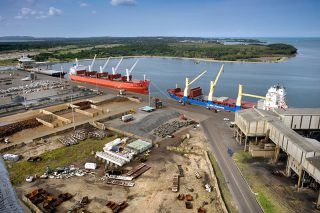Two South African ports have been selected for the first phase of the LNG-to-Power IPP Procurement Programme, according to the Department of Energy (DoE) of the Republic of South Africa.
Together with Transnet National Ports Authority (TNPA), the DoE has conducted various studies on the suitability of locating a liquefied natural gas (LNG) import terminal at each of the ports of Ngqura and Richards Bay on South Africa’s east coast, and the west coast port of Saldanha Bay over the last 18 months.
The studies indicated that Saldanha Bay requires substantial work not just on the port, but on the grid infrastructure, the servitudes for the pipeline and transmission lines and the location for the power plant.
Therefore, the authorities decided that the the first phase of the procurement programme, which aims to identify, select and enable bidders to develop, finance, construct and operate one gas-fired power generation plant, would be related to each of two ports, Ngqura in the Eastern Cape Province and Richards Bay in KwaZulu-Natal Province. The DoE is at present finalising its site enablement studies for the development of the projects.
A site has been identified at each port for the LNG-receiving facilities, within the port limits, and power plant facilities, with appropriate linear servitudes, outside of the port limits, the DoE said, adding that it is now working towards preparing these sites to offer for development in a forthcoming Request for Proposal (RFP).
Under the TNPA’s port master plan, the development of an LNG import terminal at the Port of Saldanha Bay remains an opportunity in the next phase of the LNG-to-Power IPP Procurement Programme. The DoE will continue with the relevant studies in the Saldanha Bay area in anticipation of the next phase.
Copyright Ships & Ports Ltd. Permission to use quotations from this article is granted subject to appropriate credit given to www.shipsandports.com.ng as the source.

